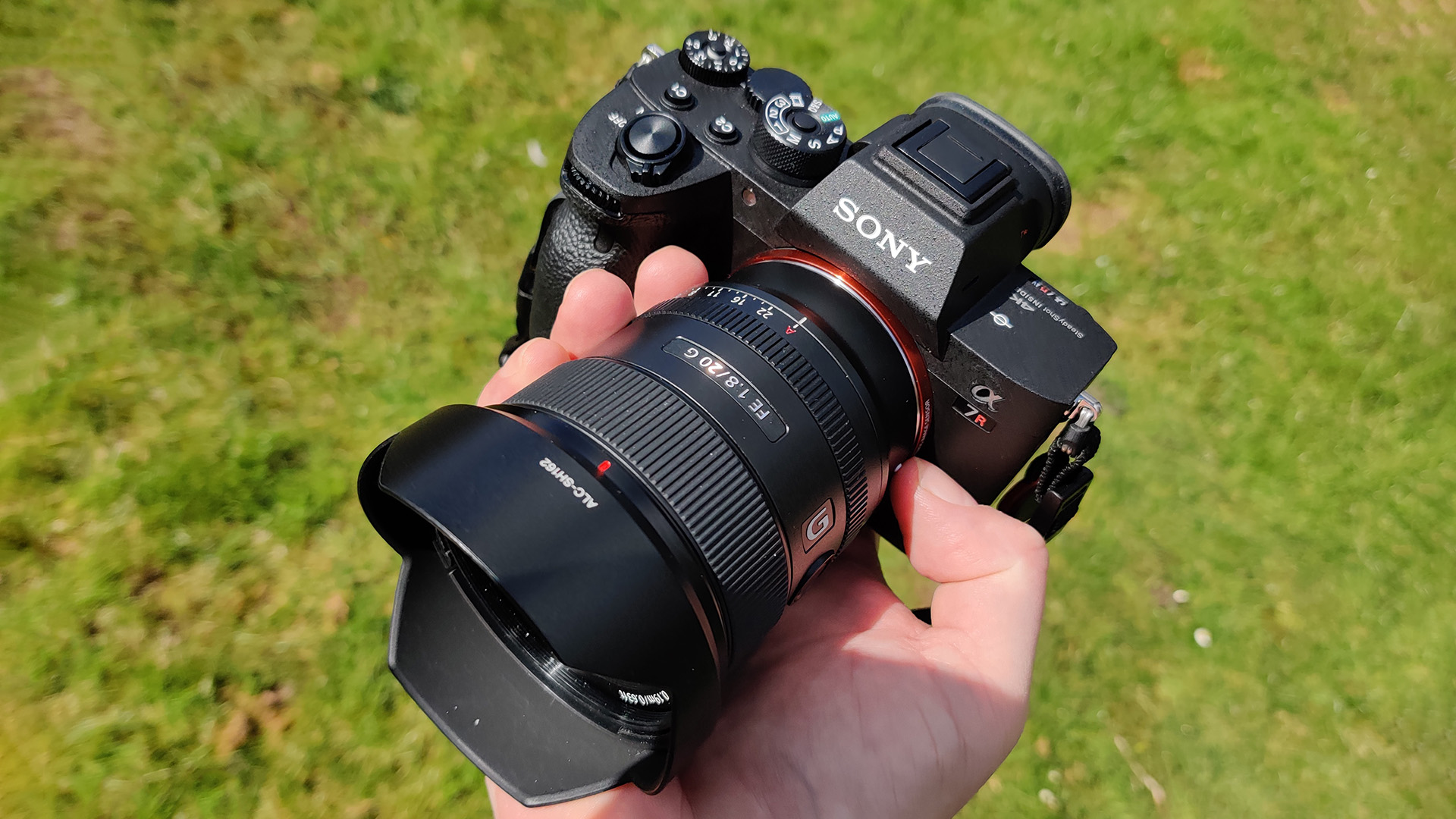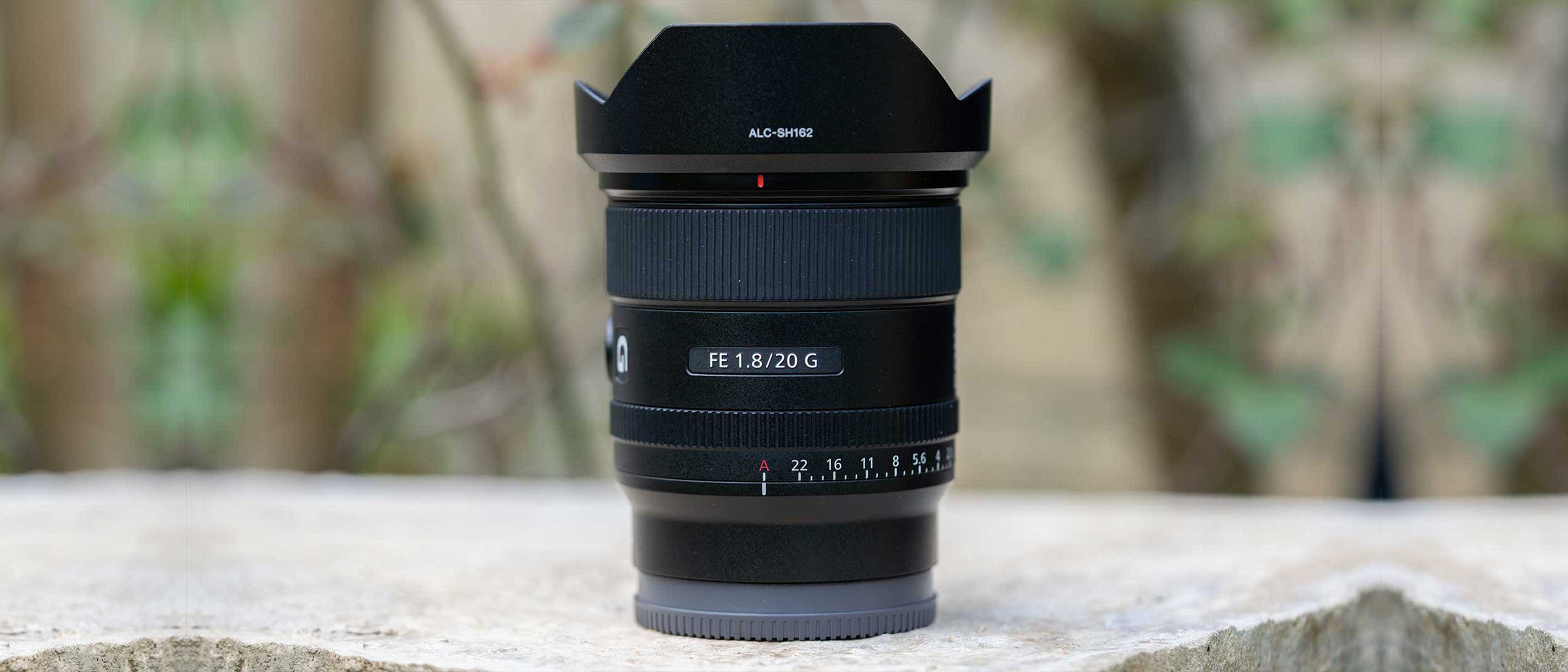Space Verdict
An excellent choice for all kinds of wide-angle photography, whether at night or during the day. Both wide and fast in a compact package.
Pros
- +
Fast aperture
- +
Well made
Cons
- -
No aperture lock
- -
Unpopular focal length
Why you can trust Space.com
The 20mm lens is a little bit hard done by. All major manufacturers feature one in their lens line-ups (though Canon’s EF lens is a bit of an oddity), but they don’t get the love lavished on them like the 24mm or ultra-wides do. They’re an uncomfortable middle ground, not wide enough for the true wide lovers, too close to 24mm for anyone with a standard zoom (though fans of the 35mm prime might well give it some thought).
Mount: Sony FE
Length: 84.7mm (3.3 inches)
Weight: 373 g (13.2 oz)
Aperture blades: 9
Minimum focus distance: 18cm (0.59ft)
Angle of view: 94 degrees
In practice, 20mm is just noticeably wider than 24mm - every mm counts at this end of the focal length range - and Sony’s E-mount 20mm G lens, with its f/1.8 aperture, settles into a niche that’s particularly good for astrophotography. While it can’t compete with the 14mm f/1.8 from Sony or Sigma for sheer width, it’s also much cheaper and weighs a good deal less in your bag. Even Sigma’s 20mm Art lens, which has an f/1.4 aperture, is a much larger, heavier optic with a bulbous front element that prevents traditional filter use.
If you want to have a look at some other lenses check out our guide to the best lenses for astrophotography, and if you're in the market for a camera body see our best cameras for astrophotography and our more general best cameras for photo and video guides.
Sony 20mm f/1.8 G lens: Design

- Reasonably small and light
- Aperture ring
- Flat front element
While it can sometimes seem that some lens manufacturers - especially Sigma - didn’t get the memo about mirrorless lenses being smaller and lighter than their DSLR counterparts, Sony’s 20mm G lens is fairly restrained as far as size and weight go. Some of this is down to the f/1.8 aperture, the shaving off two-thirds of a stop over an f/1.4 lens leading to a decent weight saving while remaining faster than the f/2.8 competition from Tamron’s 20mm and Samyang’s much lighter 18mm. Its 67mm filter thread is a common one, too.
Like all G lenses, the 20mm is constructed of plastic with a metal mount. It sports a manual focus ring, an aperture ring with an Auto position but no lock, a switch for de-clicking the ring, an AF/MF switch, and a single programmable focus-hold button. The supplied petal-shaped hood is of good quality plastic - and feels considerably better than the metal circular one that comes with the 24mm f/2.8 G - while the lens cap is a standard center-pinch design.
The plastic body is set with a slight texture that helps it resist fingerprints and retain its shine. The manual focus ring isn’t the thickest we’ve seen but is easy to grip using just the thumb and forefinger. On our copy, the ring is perhaps a little loose, but we didn’t find it hard to achieve good focus on the stars using the camera’s rear screen and its handy focus zoom.
Sony 20mm f/1.8 G lens: Performance

- Fast aperture
- Coma isn’t too bad
- Nor is the vignetting
All fast wide lenses suffer from a problem called ‘coma’ when used for astrophotography, which sees otherwise point-like stars spread out as they approach the edges and corners of the frame. The easiest way to prevent this is to stop down to something like f/2.8, but you buy an f/1.8 lens to use it at f/1.8, and it’s not something easily fixed in software, so the ‘angel wings’ sticking out of the sides of a star become a common sight.
Breaking space news, the latest updates on rocket launches, skywatching events and more!
The Sony 20mm suffers from slight coma distortion, particularly in the far corners, but it’s not pronounced. Vignetting is likewise well-controlled, though a built-in lens profile means that JPEG images have it automatically removed, and raw shooters may not see it either, as Adobe Lightroom automatically applies the profile when raw images are imported into its catalog. The same applies to chromatic aberration.
Being reasonably light, the lens is ideal for placing on a star tracker, which often has a weight limit. The movement of stars can affect their sharpness in an image, and the common method of working out the maximum exposure that minimizes this is to divide 500 by your focal length, which in the case of the 20mm lens comes to 25 seconds. A 25-second exposure at f/1.8 lets in a lot of light, so you’ll need to wait until it’s really dark to use this - shorter exposures can darken the sky to a deep blue while retaining the points of stars.
Sony 20mm f/1.8 G lens: Functionality

- Good sharpness
- Decent close focusing
- Aperture ring doesn’t lock
We appreciate Sony returning the aperture ring to some of its lenses instead of relying on setting via the camera body, but without a lock, it’s possible to nudge it onto f/22 from the Auto position, particularly if you’ve got larger fingers that fit snugly in the gap between body and lens. This is a minor gripe, and not exclusive to the 20mm lens.
Image quality is excellent and autofocus snappy, with sharpness spreading to the edges and corners even wide open, while handheld landscape snappers will be delighted with the depth of field the lens is capable of even at f/1.8. Place the subject close to the camera and let the background recede, however, and a decent amount of blur is possible. The minimum focus distance, not marked on the lens, is about 18cm, so it’s possible to get quite close.
Should you buy the Sony 20mm f/1.8 G lens?
Sony’s fast 20mm prime is both wide and fast but manages to keep its size and weight down compared to wider lenses with the same aperture, and faster lenses of the same focal length. It’s acceptably sharp wide open, becomes extremely sharp when stopped down, and the coma distortion, while present, doesn’t make too much of an impact on night sky photos, especially if you don’t zoom in too closely.

If this product isn’t for you
Fast lenses wider than 24mm are a competitive area for the E-mount. Sony and Sigma make big and heavy 14mm f/1.8 optics, while Samyang makes a 14mm f/2.8 (in both manual and autofocus variants) and many f/2.8 zooms now go out that far, or even to 12mm. Samyang’s 18mm f/2.8 is the smallest and lightest any ultrawide AF prime is likely to get (Sony has a Zeiss-branded lens in this category, but it’s three times the price), while Samyang’s 12mm f/2 and Sigma’s 16mm f/1.4 are APS-C lenses, so aren’t as wide as they sound when mounted on the appropriate cameras.
Sigma packs a pair of E-mount 20mm lenses, the f/1.4 Art which is much larger and heavier than the Sony, though produces impeccable images, and the F/2 contemporary, part of the beautifully designed i-Series of small, metal lenses. Tamron makes a 20mm f/2.8 which stands out thanks to its particularly close focusing - perhaps not so useful for astro work. A maximum aperture of f/2.8 is borderline for astrophotography anyway - something faster is usually preferred unless you’re using a tracker.
Manual-focus lens manufacturer Laowa makes 12mm f/2.8 and 15mm f/2 lenses in E-mount that might interest astrophotographers too, as autofocus is less important when focusing on the stars.

Ian has been a journalist for over 20 years. He's written for magazines and websites on subjects such as astronomy, quantum physics, keeping fish, PC hardware, photo editing and gardening. Ian was also editor of Windows Help and Advice magazine and the Discover Science bookazines. In his spare time he has a pet tortoise and grows his own vegetables, but wishes he had more time for photography.

